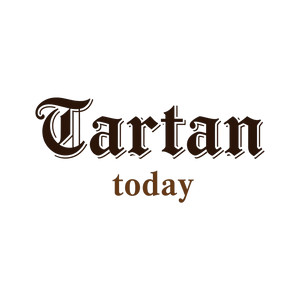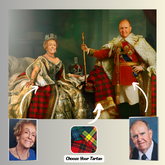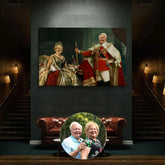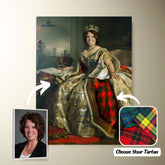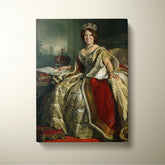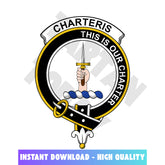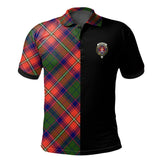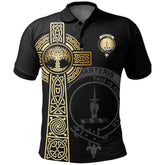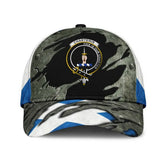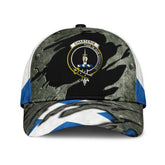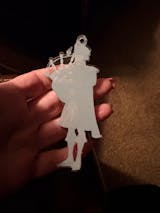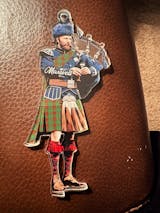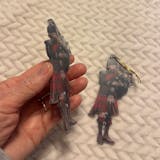-
Personalized Clan Charteris District Clan Crest Tartan Santa Ornament – Custom Acrylic Christmas Decoration DL25 - Charteris
Personalized Clan Charteris District Clan Badge Tartan Ornament – Custom Acrylic Christmas Decoration DL25Celebrate your Scottish heritage with this unique wood & acrylic tartan ornament. Perfect as a personalized Christmas decoration or a meaningful gift for friends and relatives on special occasions such as...- From $19.99 USD
- From $19.99 USD
- Unit price
- per
-
Charteris
-
Personalized Clan Charteris District Clan Crest Tartan Santa Ornament – Custom Acrylic Christmas Decoration MD63 - Charteris
Personalized Clan Charteris District Clan Badge Tartan Ornament – Custom Acrylic Christmas Decoration MD63Celebrate your Scottish heritage with this unique wood & acrylic tartan ornament. Perfect as a personalized Christmas decoration or a meaningful gift for friends and relatives on special occasions such as...- From $19.99 USD
- From $19.99 USD
- Unit price
- per
-
Charteris
-
Clan Charteris (Earl of Wemyss) Tartan Crest, Badges, Heraldry, Clans, Family Scotland PNG, Digital ClipArt High Quality AQ71
Clan Charteris (Earl of Wemyss) Tartan Crest, Badges, Heraldry, Clans, Family Scotland PNG, Digital ClipArt High Quality AQ71 DIGITAL FILE ONLY* ** This listing is an INSTANT DIGITAL DOWNLOAD, not a physical item. An instant download is a digital file you can download and...- $3.49 USD
$5.99 USD- $3.49 USD
- Unit price
- per
Save $2.50 -
Clan Charteris Tartan Polo Shirt Viking Wolf LG61 - Charteris Tartan
Clan Charteris Tartan Polo Shirt Viking Wolf LG61 Description: Crafted in 100% polyester with your own design which combines comfort and vogue. This shirt has some'great features, it has 3 buttons, elastic collar and cuffs. 12.35 Oz. Made from polyester fabric. 3 buttons, elastic...- $38.25 USD
- $38.25 USD
- Unit price
- per
-
Charteris Tartan
-
Clan Charteris Tartan Polo Shirt Half of Me - Cross Style WS49 - Charteris Tartan
Clan Charteris Tartan Polo Shirt Half of Me - Cross Style WS49 Description: Crafted in 100% polyester with your own design which combines comfort and vogue. This shirt has some'great features, it has 3 buttons, elastic collar and cuffs. 12.35 Oz. Made from polyester...- $38.25 USD
- $38.25 USD
- Unit price
- per
-
Charteris Tartan
-
Clan Charteris Tartan Polo Shirt - Royal Coat Of Arms Style QF42 - Charteris Tartan
Clan Charteris Tartan Polo Shirt - Royal Coat Of Arms Style QF42 Description: Crafted in 100% polyester with your own design which combines comfort and vogue. This shirt has some'great features, it has 3 buttons, elastic collar and cuffs. 12.35 Oz. Made from polyester...- $38.25 USD
- $38.25 USD
- Unit price
- per
-
Charteris Tartan
-
Clan Charteris Tartan Polo Shirt - Lion Rampant And Celtic Thistle Style IY85 - Charteris Tartan
Clan Charteris Tartan Polo Shirt - Lion Rampant And Celtic Thistle Style IY85 Description: Crafted in 100% polyester with your own design which combines comfort and vogue. This shirt has some'great features, it has 3 buttons, elastic collar and cuffs. 12.35 Oz. Made from...- $38.25 USD
- $38.25 USD
- Unit price
- per
-
Charteris Tartan
-
Clan Charteris Tartan Polo Shirt - Believe In Me Style IG95 - Charteris Tartan
Clan Charteris Tartan Polo Shirt - Believe In Me Style IG95 Description: Crafted in 100% polyester with your own design which combines comfort and vogue. This shirt has some'great features, it has 3 buttons, elastic collar and cuffs. 12.35 Oz. Made from polyester fabric....- $38.25 USD
- $38.25 USD
- Unit price
- per
-
Charteris Tartan
-
Clan Charteris Tartan Polo Shirt - Alba Celtic Style NY96 - Charteris Tartan
Clan Charteris Tartan Polo Shirt - Alba Celtic Style NY96 Description: Crafted in 100% polyester with your own design which combines comfort and vogue. This shirt has some'great features, it has 3 buttons, elastic collar and cuffs. 12.35 Oz. Made from polyester fabric. 3...- $38.25 USD
- $38.25 USD
- Unit price
- per
-
Charteris Tartan
-
Clan Charteris Tartan Polo Shirt GL30 - Charteris Tartan
Clan Charteris Tartan Polo Shirt GL30 Description: Crafted in 100% polyester with your own design which combines comfort and vogue. This shirt has some'great features, it has 3 buttons, elastic collar and cuffs. 12.35 Oz. Made from polyester fabric. 3 buttons, elastic collar and...- $38.25 USD
- $38.25 USD
- Unit price
- per
-
Charteris Tartan
-
Clan Charteris Clan Polo Shirt Viking Wolf QM88 - Charteris
Clan Charteris Clan Polo Shirt Viking Wolf QM88 Description: Crafted in 100% polyester with your own design which combines comfort and vogue. This shirt has some'great features, it has 3 buttons, elastic collar and cuffs. 12.35 Oz. Made from polyester fabric. 3 buttons, elastic...- $38.25 USD
- $38.25 USD
- Unit price
- per
-
Charteris
-
Clan Charteris Clan - Military Polo Shirt LX18 - Charteris Tartan
Clan Charteris Clan - Military Polo Shirt LX18 Description: Crafted in 100% polyester with your own design which combines comfort and vogue. This shirt has some'great features, it has 3 buttons, elastic collar and cuffs. 12.35 Oz. Made from polyester fabric. 3 buttons, elastic...- $38.25 USD
- $38.25 USD
- Unit price
- per
-
Charteris Tartan
-
Clan Charteris (Earls of Wemyss) Clan Unisex Polo Shirt - Celtic Tree Of Life YY65 - Charteris (Earls of Wemyss) Tartan
Clan Charteris (Earls of Wemyss) Clan Unisex Polo Shirt - Celtic Tree Of Life YY65 Description: Crafted in 100% polyester with your own design which combines comfort and vogue. This shirt has some'great features, it has 3 buttons, elastic collar and cuffs. 12.35 Oz....- $38.25 USD
- $38.25 USD
- Unit price
- per
-
Charteris (Earls of Wemyss) Tartan
-
Charteris District Tartan Clan Crest Badge Aloha Hawaiian Shirt Tropical Old Style WR40 - Charteris District Tartan
Charteris District Tartan Clan Crest Badge Aloha Hawaiian Shirt Tropical Old Style WR40 These Hawaiian shirts and shorts are suitable for hot summer days or beach trips with your friends, family, and loved ones. This is an excellent gift, vacation outfit, or simply revamp...- $43.25 USD
- $43.25 USD
- Unit price
- per
-
Charteris District Tartan
-
Clan Charteris (Earl of Wemyss) Crest Tartan Acrylic Christmas Ornament HX69 - Charteris (Earl of Wemyss) Tartan
Clan Charteris (Earl of Wemyss) Crest Tartan Acrylic Christmas Ornament HX69“Decorating the house” may be one of the most exciting tasks jotted down on your to-do list when the holiday season approaches. Yet, since shabby, dull-looking pieces of decor infest the marketplace, finding real...- From $21.25 USD
- From $21.25 USD
- Unit price
- per
-
Charteris (Earl of Wemyss) Tartan
-
Clan Charteris (Earl of Wemyss) Tartan Christmas Tree Skirt LZ71 - Charteris (Earl of Wemyss) Tartan
Clan Charteris (Earl of Wemyss) Tartan Christmas Tree Skirt LZ71 Product detail: 100% polyester tricot fabric, thick and durable. Suitable for not only Christmas but also the whole winter. Velcro closure and center hole allows for easy installment and removal. One-side Printing Machine washable...- From $48.25 USD
- From $48.25 USD
- Unit price
- per
-
Charteris (Earl of Wemyss) Tartan
-
Clan Charteris (Earl of Wemyss) Tartan Crest Christmas Santa Hat RV26 - Charteris (Earl of Wemyss) Tartan
Clan Charteris (Earl of Wemyss) Tartan Crest Christmas Santa Hat RV26 Product Detail: Material: Polyester Design Area: Single side full width printing Sizes:'S (26 x 38 cm); L (32.5 x 45 cm)- From $25.41 USD
- From $25.41 USD
- Unit price
- per
-
Charteris (Earl of Wemyss) Tartan
-
Clan Charteris (Earl of Wemyss) Tartan Crest Classic Cap YM73 - Charteris (Earl of Wemyss) Tartan
Clan Charteris (Earl of Wemyss) Tartan Crest Classic Cap YM73 All of our Classic Caps are custom-made-to-order and handcrafted to the highest quality standards. Add style and personality to your hat collection with a custom printed classic cap! Constructed with 100% premium polyester that’s...- $33.45 USD
- $33.45 USD
- Unit price
- per
-
Charteris (Earl of Wemyss) Tartan
-
Clan Charteris Tartan Crest Classic Cap YX45 - Charteris Tartan
Clan Charteris Tartan Crest Classic Cap YX45 All of our Classic Caps are custom-made-to-order and handcrafted to the highest quality standards. Add style and personality to your hat collection with a custom printed classic cap! Constructed with 100% premium polyester that’s lightweight for maximum...- $33.45 USD
- $33.45 USD
- Unit price
- per
-
Charteris Tartan
-
Clan Charteris (Earl of Wemyss) Tartan Crest Christmas Stocking FY69 - Charteris (Earl of Wemyss) Tartan
Clan Charteris (Earl of Wemyss) Tartan Crest Christmas Stocking FY69 DESCRIPTION: Christmas Stocking is used to display as home decoration or meaningful gifts for friends and relatives on special occasions such as Christmas, Valentine, birthday' Dimensions: (Cuff Width x Length x Width): 20 x...- $24.45 USD
- $24.45 USD
- Unit price
- per
-
Charteris (Earl of Wemyss) Tartan
Ex: Your Tartan + Product
Popular Products
Turn Me Royal Personalized Portrait from Your Photo, Custom Tartan. Custom Canvas Wall Art as Gift for Men
- From $32.45 USD
- From $32.45 USD
- Unit price
- / per
Royalty Couple Personalized Portrait from Your Photo, Custom Tartan. Custom Canvas Wall Art
- From $47.45 USD
- From $47.45 USD
- Unit price
- / per
The Queen Personalized Portrait from Your Photo, Custom Tartan. Custom Canvas Wall Art as Gift for Women
- From $32.45 USD
- From $32.45 USD
- Unit price
- / per
Which Clan Are You From?
List Of Tartan
-
Clan A
- Abercrombie Tartan
- Aberdeen Tartan
- Abernethy Tartan
- Adair Tartan
- Adam Tartan
- Ayrshire Tartan
- Agnew Tartan
- Aikenhead Tartan
- Ainslie Tartan
- Aiton Tartan
- Allan Tartan
- Alexander Tartan
- Allardice Tartan
- Allison Tartan
- Anderson Tartan
- Angus Tartan
- Anstruther Tartan
- Arbuthnot Tartan
- Armstrong Tartan
- Arnott Tartan
- Auchinleck Tartan
- Ayrshire Tartan
-
Clan B
- Baillie Tartan
- Bain Tartan
- Baird Tartan
- Balfour Tartan
- Bannatyne Tartan
- Bannerman Tartan
- Barclay Tartan
- Baxter Tartan
- Beaton Tartan
- Bell Tartan
- Belshes Tartan
- Bethune Tartan
- Beveridge Tartan
- Binning Tartan
- Bisset Tartan
- Blackadder Tartan
- Blackstock Tartan
- Black Watch Tartan
- Blair Tartan
- Blane Tartan
- Blyth Tartan
- Borthwick Tartan
- Boswell Tartan
- Bowie Tartan
- Boyd Tartan
- Boyle Tartan
- Brisbane Tartan
- Brodie Tartan
- Brown/ Broun Tartan
- Bruce Tartan
- Buccleuch Tartan
- Buchan Tartan
- Buchanan Tartan
- Burnett Tartan
- Burns Tartan
- Butter Tartan
- Byres Tartan
-
Clan C
- Cairns Tartan
- Calder Tartan
- Callander Tartan
- Cameron Tartan
- Campbell Tartan
- Campbell of Breadalbane Tartan
- Campbell of Cawdor Tartan
- Carmichael Tartan
- Carnegie Tartan
- Carruthers Tartan
- Cathcart Tartan
- Chalmers Tartan
- Charteris Tartan
- Chattan Tartan
- Cheyne Tartan
- Chisholm Tartan
- Christie Tartan
- Clark Tartan
- Clelland Tartan
- Clephan Tartan
- Clergy Tartan
- Cochrane Tartan
- Cockburn Tartan
- Colquhoun Tartan
- Colville Tartan
- Cooper Tartan
- Couper Tartan
- Craig Tartan
- Cranstoun Tartan
- Crawford Tartan
- Crichton Tartan
- Crief District Tartan
- Crosbie Tartan
- Cumming Tartan
- Cunningham Tartan
- Currie Tartan
- Clan D
- Clan E
- Clan F
- Clan G
- Clan H
- Clan I
- Clan J
- Clan K
- Clan L
-
Clan M
- Maitland Tartan
- Malcolm Tartan
- Mar Tartan
- Marjoribanks Tartan
- Maxtone Tartan
- Matheson Tartan
- Maule Tartan
- Maxwell Tartan
- Meldrum Tartan
- Melville Tartan
- Menzies Tartan
- Mercer Tartan
- Middleton Tartan
- Moffat Tartan
- Moncrieffe Tartan
- Montgomery Tartan
- Monypenny Tartan
- Moncreiffe Tartan
- Monteith Tartan
- Morrison Tartan
- Mouat Tartan
- Moubray Tartan
- Mow Tartan
- Muir_More Tartan
- Muirhead Tartan
- Munro Tartan
- Murray Tartan
- Murray of Atholl Tartan
-
Clan Mc/Mac
- MacAlister Tartan
- MacArthur Tartan
- MacAlpine Tartan
- MacAulay Tartan
- MacBain Tartan
- MacBean Tartan
- MacBeth Tartan
- MacCallum Tartan
- MacCraig Tartan
- MacColl Tartan
- MacCorquodale Tartan
- MacDiarmid Tartan
- MacDonald Tartan
- MacDonald of Clanranald Tartan
- MacDonald of Sleat Tartan
- MacDonnell of Glengarry Tartan
- MacDonnell of Keppoch Tartan
- MacDougall Tartan
- MacDowall Tartan
- MacDuff Tartan
- MacEwen_MacEwan Tartan
- MacEdward Tartan
- MacFarlane Tartan
- MacGill Tartan
- MacGillivray Tartan
- MacGregor Tartan
- MacGowan (McGowan) Tartan
- MacHardy Tartan
- MacIan Tartan
- MacInnes Tartan
- MacIntyre Tartan
- MacKay Tartan
- MacKillop Tartan
- MacKellar Tartan
- Mackinlay Tartan
- MacKenzie Tartan
- Mackie Tartan
- MacKinnon Tartan
- MacKintosh / MacIntosh Tartan
- MacLeod Tartan
- MacMillan Tartan
- MacNab Tartan
- MacNaughton Tartan
- MacNeil / MacNeill Tartan
- MacNeil of Colonsay Tartan
- MacNicol Tartan
- MacPhail Tartan
- MacPhee_MacFie Tartan
- MacPherson Tartan
- MacQuarrie Tartan
- MacQueen Tartan
- MacRae Tartan
- MacRow Tartan
- MacSporran Tartan
- MacTaggart Tartan
- MacTavish Tartan
- MacThomas Tartan
- McCorquodale Tartan
- McCulloch Tartan
- McFadzen Tartan
- McGeachie Tartan
- McIver Tartan
- McKerrell Tartan
- Clan N
- Clan O
- Clan P
- Clan R
-
Clan S
- Sandilands Tartan
- Scott Tartan
- Scrymgeour Tartan
- Selkirk Tartan
- Sempill Tartan
- Seton Tartan
- Shaw Tartan
- Shepherd Tartan
- Sinclair Tartan
- Skene Tartan
- Skirving Tartan
- Smith Tartan
- Somerville Tartan
- Spalding Tartan
- Spens Tartan
- Spottiswood Tartan
- Stevenson Tartan
- Stewart Tartan
- Stewart of Appin Tartan
- Stirling Tartan
- Strachan Tartan
- Straiton Tartan
- Strange Tartan
- Strathclyde District Tartan
- Stuart of Bute Tartan
- Sutherland Tartan
- Swinton Tartan
- Clan T
- Clan U W Y
- Request Your Clan
Clan Charteris (Charteris Tartan)
1. About Clan Charteris (Charteris Tartan)
2. Charteris Clan History (Charteris Tartan)
Sir James Douglas of Drumlanrig challenged the eighth Laird, Sir Robert Charteris, to a duel in 1530. The King saw the duel from the walls of the castle and had to send warriors to break it up because it was so fierce.
Another family branch that made its home in Perthshire has long contested the chiefship.
Despite being a supporter of the Covenant, Sir John Charteris of Amisfield was unwilling to use force against Charles I and spent two years in a Scottish prison. He then joined the Marquis of Montrose in the battle at Philiphaugh in 1645.
A daughter of Colonel Francis Charteris, who later wed the Earl of Wemyss, survived him. Francis, her second child, took on the name and crest of Charteris and received the holdings.
3. Charteris Tartans
There is no official Charteris tartan, however those who bear the name can don the Roxburgh District tartans, which are representative of the area where the Charteris name was historically prevalent.
Roxburgh District Modern
Roxburgh District Ancient
Roxburgh District Muted
4. Charteris Crest & Coats of Arms
4.1 Clan Charteris Crest
Worn by all of the name and ancestry
4.2 Clan Charteris Coat of Arms
Note on Coats of Arms: A coat of arms is given to an individual under Scottish heraldic law (with the exception of civic or corporate arms). A 'family coat of arms' does not exist.
With the exclusions listed above, the weapons depicted below are personal weapons. The only person authorized to use these weapons is the grantee.
CHARTERIS of Amisfield
Within a double tressure of flory counterflory on argent, a fess of azure Gules
5. Charteris Places & People
5.1 Clan Charteris People
Colonel Francis Charteris, (1672 – 1732)
A British aristocracy known as "The Rape-Master General" had amassed a significant fortune through gambling. For raping a servant in 1730, he was found guilty. Later, he received a pardon; but, not long after, he passed away naturally.
In Amisfield, Dumfriesshire, Charteris was baptized after being born into a prominent Scottish family. But even before he was found guilty of rape, he was well-known and hated as the stereotypical rake in London.
Although he served in the military repeatedly, he was expelled from the army four times—twice by Parliament for accepting bribes and once by the Duke of Marlborough in Belgium for card cheating.
In spite of being discharged from the military, he accumulated a sizeable fortune, and his daughter Janet married James Wemyss, the 5th Earl of Wemyss, in 1720.
Charteris served as the model for the characters in Fanny Hill, A Rake's Progress, and A Harlot's Progress (where he is depicted as the fat lecher in the opening plate). In his Moral Essay III from 1733, Alexander Pope denounced him.
There have been comparisons made between Charteris' sexual excesses and the avarice of politicians like Robert Walpole.
Although the renowned club created by Sir Francis Dashwood did not begin meeting until 1743, other accounts claim that he was a founder member of the Hellfire Club.
He might have belonged to the first "Hell-Fire Club," which Philip Wharton, 1st Duke of Wharton created in 1720. A subsequent admirer and legal name change from Leslie Charles Bowyer-Yin was Leslie Charteris, the author of Simon Templar, The Saint.
Martin Michael Charles Charteris, Baron Charteris of Amisfield GCB GCVO OBE QSO PC (1913–1999) - Main image
Queen Elizabeth II's confidante and assistant.
Hugo Charteris, Lord Elcho's son, and his brother, the 12th Earl of Wemyss, were the parents of Charteris.
He received his education at Eton and the Royal Military College Sandhurst before serving in the Middle East and earning the rank of Lieutenant-Colonel. After his return, he wed Hon.
Mary Margesson, the first Viscount Margesson's daughter, on December 16, 1944. They had three children.
He was appointed as the then-Duchess of Edinburgh's private secretary in 1950 and served in that capacity until 1972, when he was upgraded to the position of private secretary following her accession in 1952.
Before returning to Eton as its Provost in 1977, he served in this capacity up to his semi-retirement.
Most people are probably familiar with Charteris from an interview he gave to The Spectator in 1995, during which he called the Duchess of York "vulgar," the Prince of Wales "whiney," and the Queen Mother "a bit of an ostrich."
6. Associated Names
Differences in spelling include: Chatres, Charters, Charteris, Chatters and Chatteris
Clan Branches
Charteris of Dumfries Charteris of Kinfauns
- Choosing a selection results in a full page refresh.
